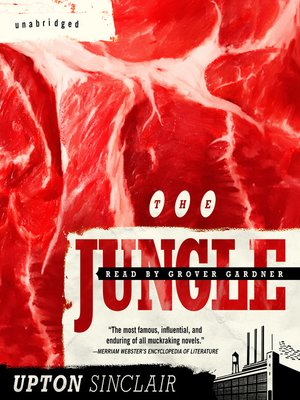

This spatial distribution appeared because of the wave of Eastern European immigrants in the early 1900’s existed at the bottom of the economic hierarchy of Packingtown. Soon after arriving in Packingtown, Jurgis found housing amongst other Eastern Europeans in the “back of the yard” with Lithuanians, Poles, Slovaks and Bohemians (Sinclair 29). When the Chicago authorities figured out the immigrants were from Lithuania, they sent them straight to the stockyards to find work, aiding in the spatial concentration of these immigrants. The next day the police found an interpreter, taught them the word ‘stockyard’ and put on a train to Packingtown.

After one day of wandering the streets of Chicago, Jurgis and his family were taken in by the police.

This spatial concentration manifested itself further within Chicago. As a node in a land of “opportunity and freedom,” the Lithuanian immigrant population created a strong pull factor, drawing other disheartened Lithuanians to their newly established community in Chicago (Sinclair 30). As Sinclair depicts in his book, Chicago was an extremely popular destination for newly arrived immigrants from Lithuania. Jurgis and his family left their home and travelled thousands of miles to live in the stockyards of Chicago because of the hope of economic opportunity in a place “where a friend of his had gotten rich” (Sinclair 23).Īs shown in The Jungle, romanticized stories from the diaspora create spatial concentrations of immigrants in communities within the receiving country. Jurgis came to believe in this idealized space because he had heard romanticized success stories from Lithuania’s diaspora. In his mind, America existed as a space where he could “be a rich man” and that if he could just pay the passage fair, “he could count his troubles at an end” (Sinclair 23). For Jurgis, America was a place where a man “might do as he pleased and count himself as good as any other man” (Sinclair 23). It is this imaginative geography that prompts Jurgis Rudkus and his Lithuanian family to leave Lithuania and travel to Packingtown, Illinios, the Chicago stockyard. Imaginative geography is a perceived conception of space. The Jungle is an incredibly illustrative piece for geographers to analyze, as it is a poignant reminder of the reality of the many fallacies of imaginative geography. By following a fictional immigrant family’s life in the Chicago stockyards, Sinclair created a space to discuss the illusion of the American Dream and America’s relationship with slaughterhouses across space and scale.

The Jungle hit mainstream America with a startling force, exposing the clandestine horrors of Chicago’s meatpacking industry. In 1905, Upton Sinclair released his book, The Jungle, to the American public.


 0 kommentar(er)
0 kommentar(er)
